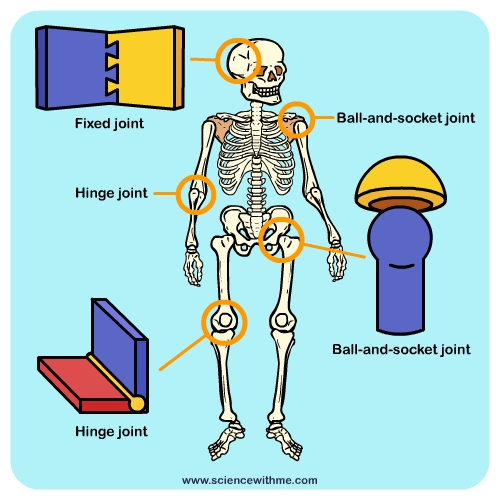If you have ever seen a dancer, a skater or an athlete move gracefully, you might have wondered how they are able to bend their limbs so effortlessly and make such amazing moves.
The answer lies in the joints. Joints permit movement and flexibility. The body has many bones and all of these are connected through joints.
What are joints?
Joints are places where bones meet. The study of joints is called “arthrology”, which is derived from the Greek words “arthros” meaning joint and “logos” meaning study. One bone can have two or more joints. An example is your jaw or mandible. It is connected to the temporal bones on either side of your skull. These joints are called temporomandibular joints. You can feel for these joints when you place your hands on the junction of your cheeks and your ears and simulate a chewing motion.

What are the functions of your joints?
Aside from smooth movement, joints also have other functions. They allow you to grow. When your brain grows, the sutures in your skulls accommodate. The primary cartilaginous joints of your knees and elbows allow you to grow to your full height. Joints also serve to minimize friction and cushion the bones against impact. Your joints and your bones help support your body and prevent you from being unstable like jell-o.
What are the classifications of joints?
Joints can be classified according to what material unites the bones. The three main types of joints are fibrous joints, cartilaginous joints and synovial joints. Fibrous joints are joined by a fibrous tissue; cartilaginous joints are united by cartilage or a mix of cartilage and fibrous tissue; synovial joints are connected by a synovial membrane which surrounds the joint cavity.
- Fibrous joints. The movement allowed by these joints is dependent on the length of the fibrous tissue connecting the bones. In the skull, these joints are called sutures. Sutures are connected by strong connective tissue and allow very little movement in adults. When you were a baby though, these sutures were not yet fully connected. At that time, you had a soft spot on your head called fontanelle. When your skull grew, that soft spot became obliterated by bones and simply became a suture. When you reach your 20s, your skull sutures will close because of the fusion of your skull bones. In elderly people, sutures are not present anymore.
- Cartilaginous joints. These joints can be primary cartilaginous joints and secondary cartilaginous joints. Primary cartilaginous joints are connected by cartilage temporarily, early in life. An example is your knee joint. Later on, the cartilage becomes bone. Secondary cartilaginous joints consist of bones with the ends covered by cartilage and connected with fibrous tissue. These joints are found in the vertebral column.
- Synovial joints. These joints are present in the joints of the limbs including the shoulder, hip, knee, ankle, toes, elbow and fingers. Their name is derived from the fact that they have synovial fluid and are enclosed within a synovial capsule. These joints have ligaments to prevent excessive movement.
What are the types of a synovial joint?
Synovial joints can be categorized into six types based on the movement they allow. The first type, a plane joint, allows gliding or sliding movement and the bones involved usually have flat surfaces. An example of a plane joint is found in the shoulder, between the shoulder blade (acromion of the scapula) and the clavicle. A hinge joint can move in the axis at right angle to the joints involved. An example is the elbow joint, which connects the humerus and the ulna. Movements allowed by this joint include flexion (bending) and extension (straightening) of your elbow. The third type of synovial joint is the condyloid joint. In Greek, “condyloid” means knuckle-like. This type of joint allows movement in two axes. Therefore you can bend it, straighten it, move it from side to side, and rotate it. An example is your wrist joint. The fourth synovial joint type is the saddle joint. This joint is so-named because the opposing surfaces of the involved bones look like a saddle – one has a convex surface while the other has a concave surface. The thumb joint, which can also move in two axes, is a good example of this joint. Ball and socket joints are perhaps the most versatile synovial joints. They are muti-axial joints, which means they can move in many axes. One joint has a ball and the other joint has a socket. The shoulder joint and the hip joints are examples of this type. In the hip joint, the ball is the head of the leg bone (femur) while the socket is the acetabulum of the hip (pelvis). Try to experiment with the kinds of movement you can make with your hip joint. You can bend, flex, open, close, rotate and circularly move (circumduct) your legs. These movements of the hip joint are very important for ballerinas and dancers who have complex leg routines. The last type of synovial joint is the pivot joint. These joints only allow rotation. One bone serves like a ring while the other bone has a rounded process rotating within the ring. This type is found in your neck, particularly in your first two cervical bones called atlas (the ring) and the dens (the rounded process). This allows you to rotate your head. Joints are very important areas in your body. They give you space for growth and allow you to move the way you want.
